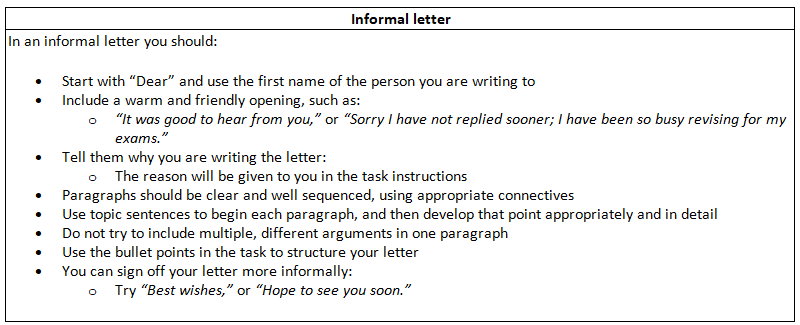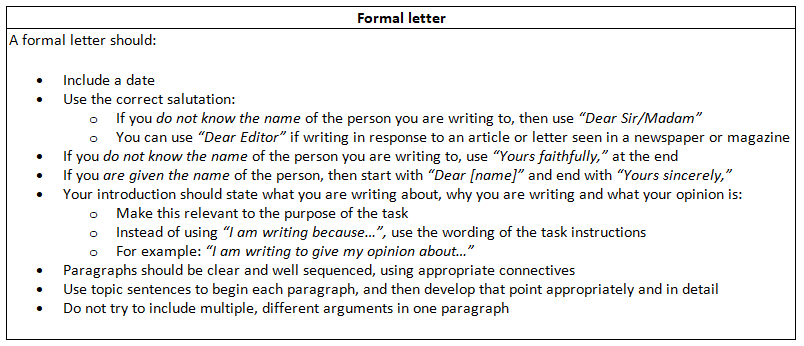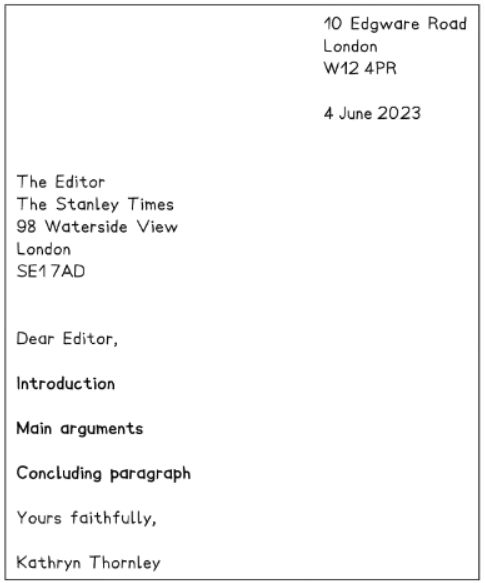Question 1 Directed Writing: How to Write a Letter | English Language for GCSE/IGCSE - Class 10 PDF Download
Introduction
For Question 1, one potential format is a letter, which could be informal, addressed to a friend or relative, or formal. The task instructions will specify the intended audience and the purpose of your letter. Your arguments should stem from the reading passages provided, and your writing assessment will consider your capacity to adapt your writing to match the task's purpose, audience, and format, as well as the structure of your response.
The following guides will detail how to structure your response in the style of two different types of letter:
- Informal letter
- Formal letter
Informal letter
In an informal letter, you'll address someone familiar, like a friend or relative. You might be tasked with providing advice or evaluating the advantages and disadvantages of a matter. It's crucial to note that despite the recipient being a friend or relative, this is an exam, and you're not actually corresponding with them. Thus, refrain from using abbreviations or slang, such as "OMG!"
 In this style of letter, informality is maintained by maintaining a light tone and incorporating personal details. However, accuracy in spelling is essential, and sentence variety and punctuation are employed for impact.
In this style of letter, informality is maintained by maintaining a light tone and incorporating personal details. However, accuracy in spelling is essential, and sentence variety and punctuation are employed for impact.
Formal letter
A formal letter is addressed to someone in a position of authority, like a headteacher, manager, or newspaper editor. While you'll still convey your viewpoints based on the reading texts, your tone and language must be tailored to suit the intended audience and purpose. Adhering to typical formal letter conventions is advisable, but avoid getting bogged down in irrelevant formatting intricacies.

A formal letter layout should look something like this:
|
16 videos|45 docs
|
FAQs on Question 1 Directed Writing: How to Write a Letter - English Language for GCSE/IGCSE - Class 10
| 1. What is the difference between an informal letter and a formal letter? |  |
| 2. What is the purpose of a formal letter layout? |  |
| 3. How should you address the recipient in a formal letter? |  |
| 4. What are some common closing phrases used in formal letters? |  |
| 5. What should you include in the body of a formal letter? |  |





















